Me and my muse
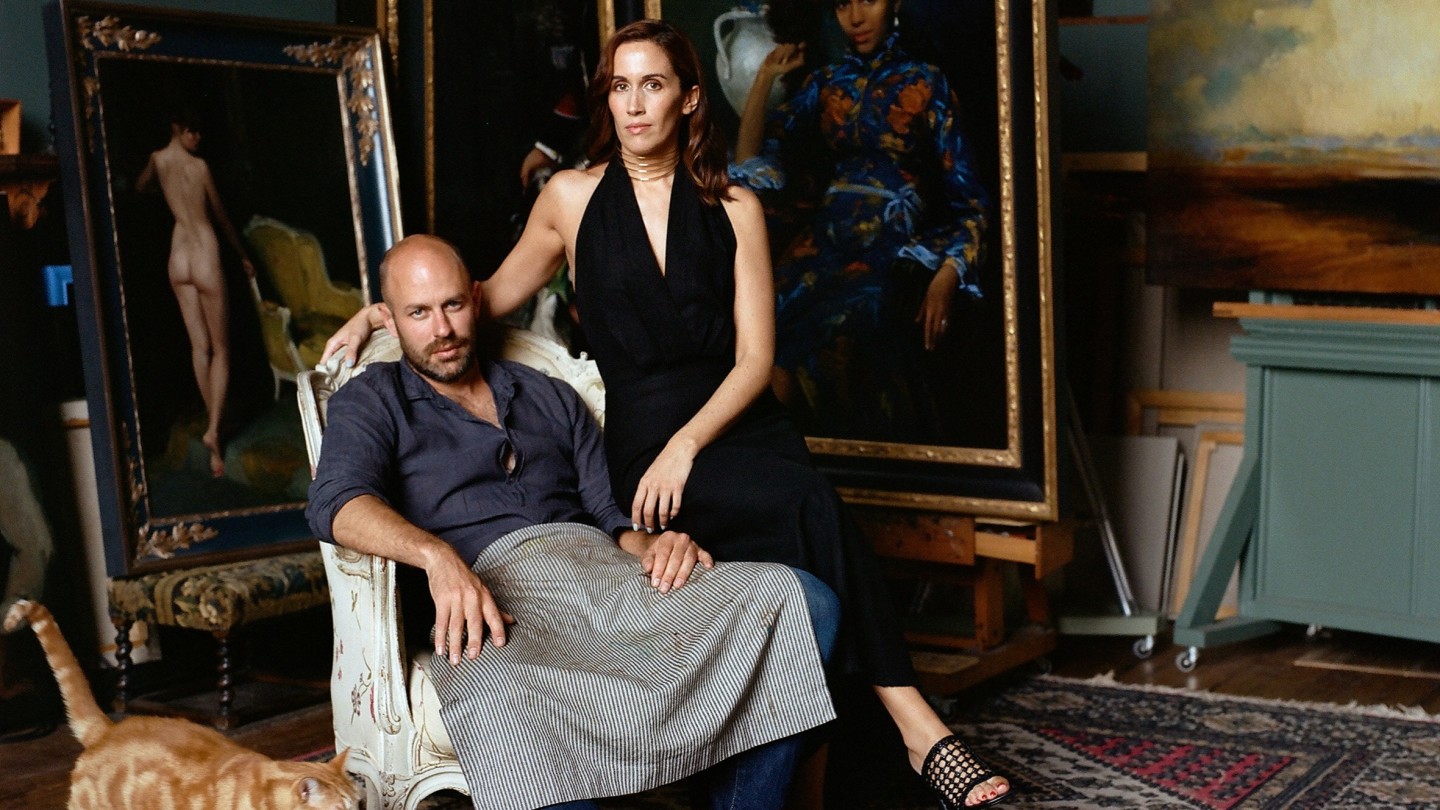
Roula Khalaf, Editor of the FT, selects her favourite stories in this weekly newsletter.
James Hayes and Laura Searle
“The first time I met James, I crashed into a barbecue in the garden. It was quite an entrance,” says Laura Searle, a slender 33-year-old Spaniard with an elegant, almost feline poise. Searle was studying at the London College of Fashion and working for Marques’Almeida when she moved next door to Hayes’s west London studio. “I was told there were artists living in these houses, and was excited to be in an artistic environment, but hadn’t realised there was someone like James and his magnificent paintings here,” she recalls. Hayes, 38, has been likened to a modern-day John Singer Sargent, and trained at the Charles H Cecil Studios in Florence.
Hayes immediately wanted to paint her. “I’m obsessed with profile. As Laura will tell you, I have lots of obsessions,” he says. These obsessions fill his waking hours – if he is not working on a canvas, he is mixing his own paints and glues. His alchemist’s table sits to one side of his studio: tubes laid to waste on trays, jam jars filled with oils, and brushes cramped into pots. On the other side, a group of chairs around a fireplace offer a place to sit and reflect.
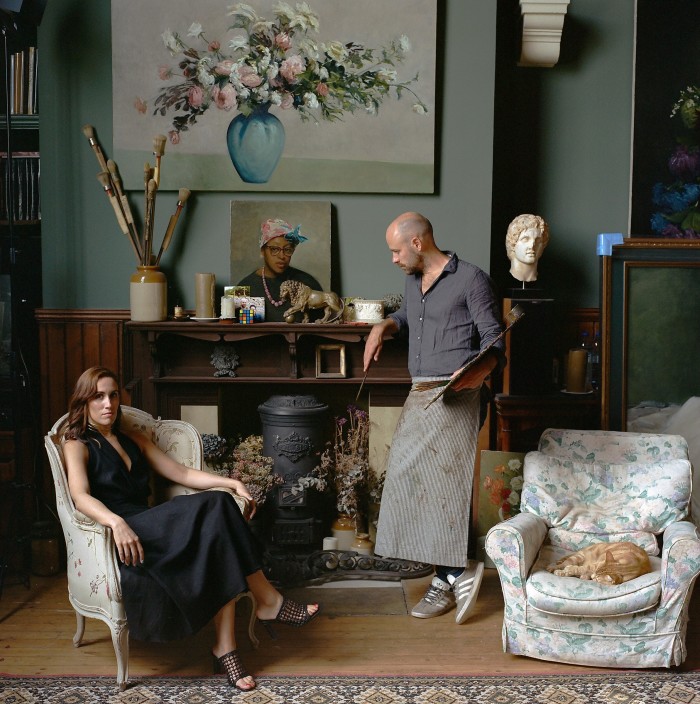
Hayes roped in Searle’s friend to persuade her to pose for him. “They had it all planned out – in the nicest possible way,” she smiles. “At that point, I’d already sat for two friends who were painting portraits, but James said, ‘No, no, she cannot be anyone else’s model. I saw her first.’ That night I agreed to pose nude for him. But the next day, when he suggested we make a start, I thought ‘Oh shit, this is real!’” Hayes laughs. “Laura had too much pride to back out,” he says. She agrees. “Once you say yes, you have to commit. I hadn’t done a nude before but decided it would be a positive experience. The moment you do it, you realise it has nothing to do with the way you look – you become an object, not in the sense of being objectified but in the sense that you’re merely being observed so the artist can create.”
Those first two paintings of Searle, which Hayes worked on consecutively over a period of some seven months, were life-size, monumental. “My paintings are a celebration of female beauty and power – that’s what I’m connecting with – and Laura is a very strong person,” says the artist, who works straight onto the canvas rather than sketching first.
“I felt really free, and that’s when you feel really beautiful,” says Searle, “but you also get to establish a beautiful connection and that’s what happened with James and I. We are great friends. When I look at those paintings, I don’t see paintings. I see memories of a very happy time in my life.”
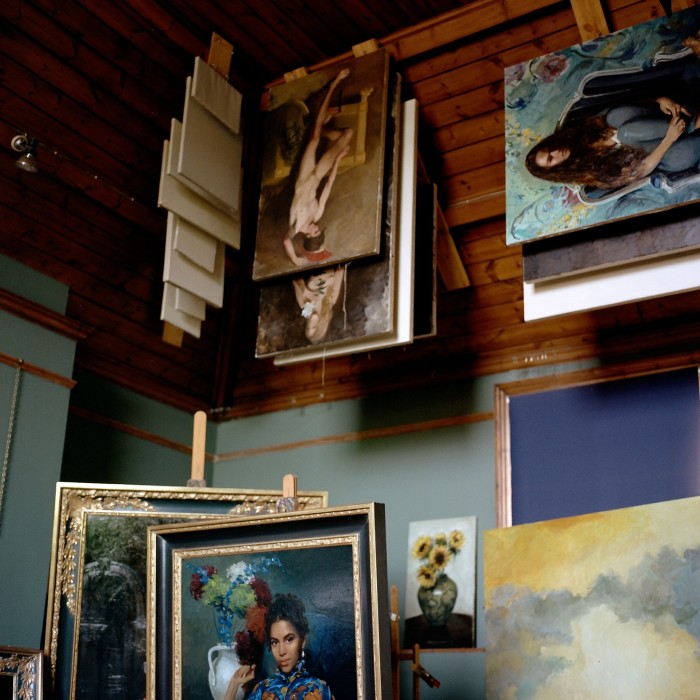
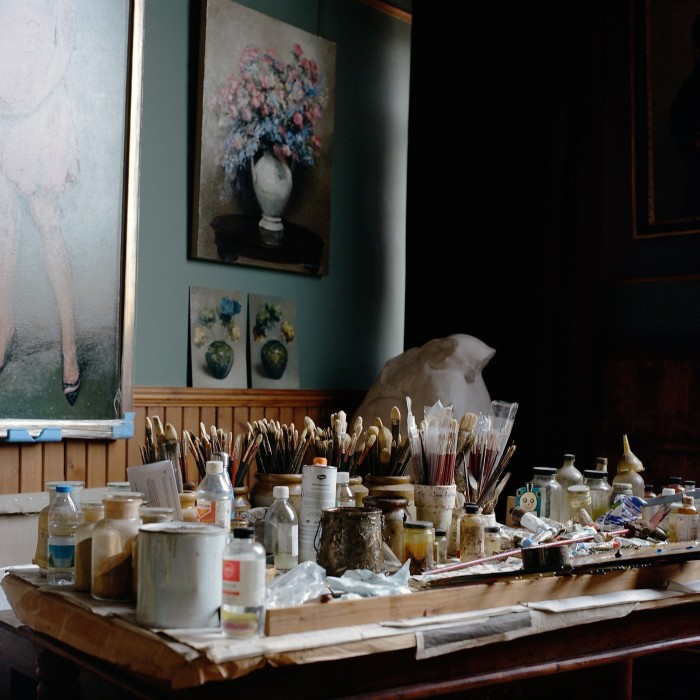
Hayes is serious about connection. “If you come to my studio and you are not prepared to be vulnerable in its purest sense, I’m never going to be able to do a proper character assessment of you. I will only ever paint a likeness and it will never say anything about you. A nude painting escalates this so the dynamic, in this case between painter and friend, goes to another level. It creates a level of trust,” he says. “I’m not trying to convey anything tangible but rather an idea, an embodiment of my idea of beauty.”
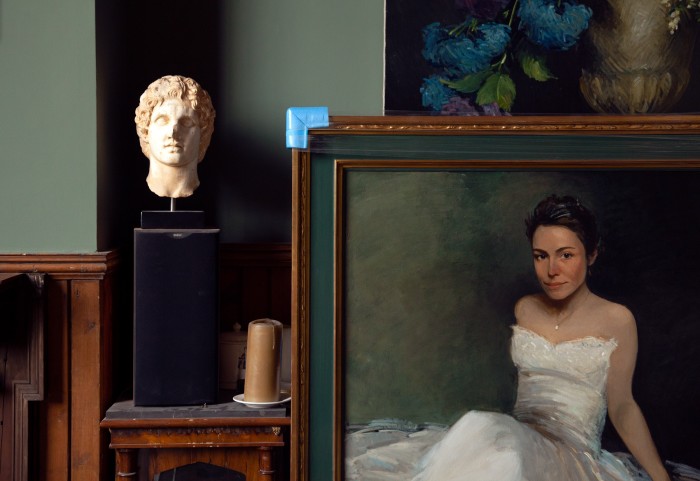
This trust has forged an unbreakable friendship. Searle now lives in Madrid working as a product marketing manager for a tech start-up as well as running her own fashion business consultancy. “Our relationship was just as important as the end result,” she says of their platonic connection. “I just thought, ‘Wow, something beautiful is coming out of this.’” Hayes interjects: “I started painting her eight or nine years ago, and we’ve since done eight paintings. During that time you learn what makes people laugh, what makes them cry. We’ve shared heartache, trauma and joy.”
Now the pair have reconnected, both are keen to continue their work. Hayes last painted Searle in early 2019. “It’s nice to document a body over a lifetime and I want to capture Laura at every stage of her life. As long as she has the time, I will paint. It’s a life pursuit,” he concludes.
Max Denison-Pender and India Leahy
It’s a sunlit summer morning in south London, and Max Denison-Pender is sitting in his terrace studio. The painter is buzzing about a forthcoming trip to the Amazon in support of Funai, a Brazilian government organisation aiding indigenous people. He is hoping to paint panthers and meet tribes rarely seen by others, a typical blend of the figurative and mythic that has characterised his work. As he talks, his friend and muse, 25-year-old India Leahy arrives. She kisses him on the cheek and perches on a stool. She is unmistakable from the canvases that surround us: emerald eyes and alabaster skin under a mass of black curls.
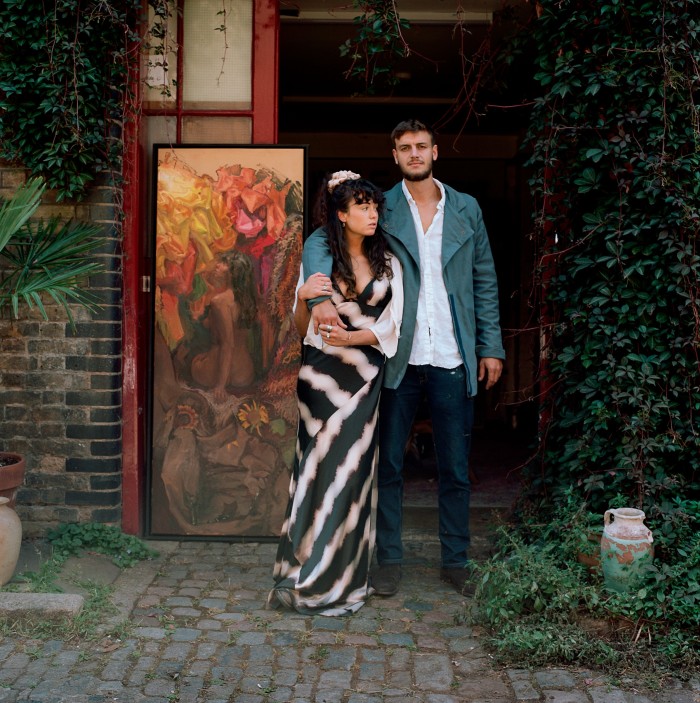
The two have not seen each other for some time as Leahy has been travelling, but they are instantly relaxed. Their first encounter was not so easy. Denison-Pender had spotted Leahy at various parties and on social media when he asked if he could paint her. At the time she was in a relationship, and refused as she felt it wouldn’t be appropriate. “I messaged Max as soon as that relationship broke up,” she says. “It intrigued me. Coming out of a break-up I thought I’d try a new venture, meet a stranger. So I let him paint me – and it turned into quite a cool friendship.”
Those first paintings, a series of three portraits captured over three days entitled She’s Called India, document the forging of their bond. “I was in a big fur coat and my hair was really curly. I think they really signify me,” Leahy says of the artworks, which remain her favourites.
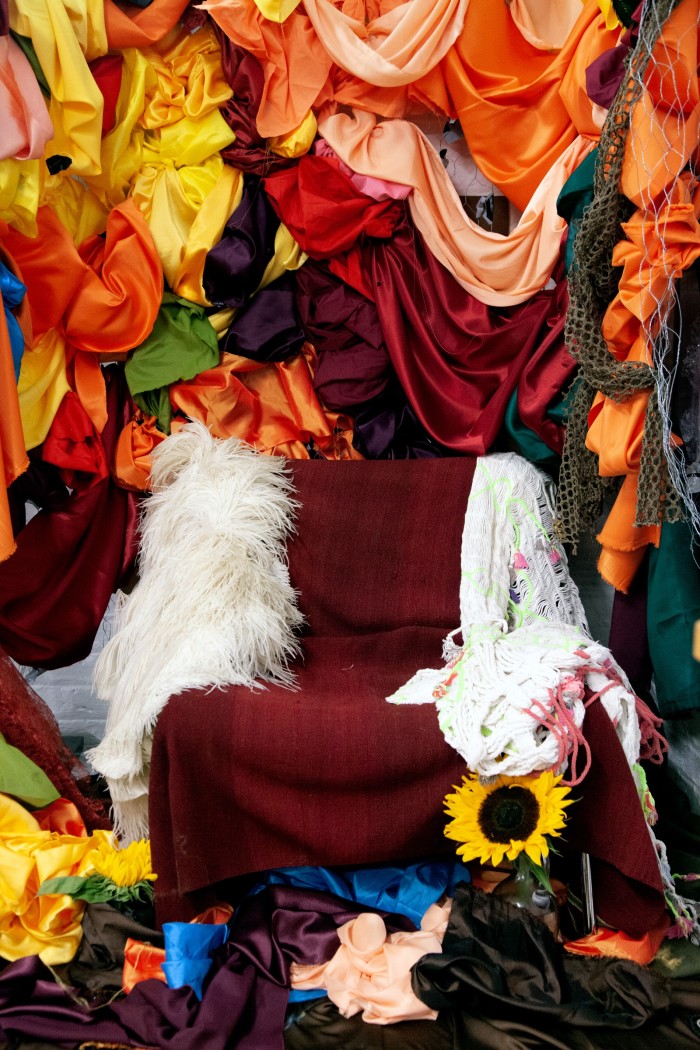
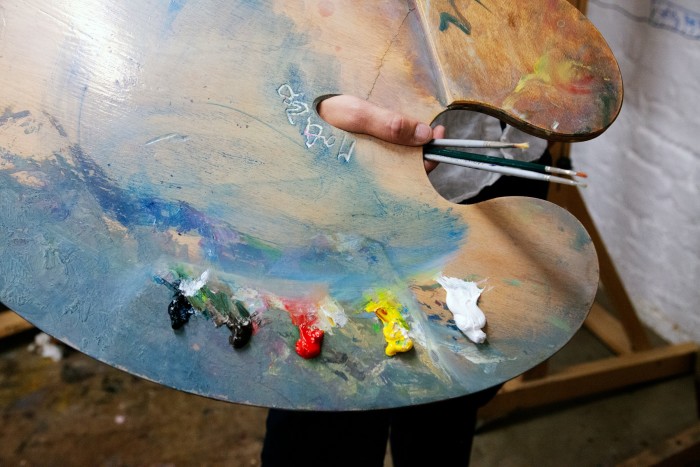
“The first day was quite relaxed but I really wanted to make eye contact with the audience, which meant we had to look at each other for long periods of time. By the second day things got steamy,” Denison-Pender jokes. Although the two did have a “thing” for a time. “By the third day, we’d spent a lot of time together and had gotten to know each other, so in the third portrait she looks strong, powerful. She is a very strong character. You almost needed a hammer and rolled-up sleeves to capture her.”
Leahy adds. “We got on really well but were equally comfortable in the silence. To share silence with someone for so long creates closeness. Not a lot of people can do that.” Leahy says she initially assumed Denison-Pender would be a “pretentious artist”, not the fun, talkative 24-year-old who subsequently became a friend. The sense of comfort that developed between them gave her the confidence to suggest that she pose nude. “I thought it would be empowering,” she says of the experience, which is enshrined in a huge portrait of Leahy propped against the studio wall.
Denison-Pender is currently represented by London’s Richard Green Gallery. Born in Santiago, Chile, but raised between rural Wiltshire in England and the countryside skirting Barcelona, Spain, he found a mentor in Xavi Miró, a descendant of Joan Miró. At 16, having dropped out of school in Barcelona to move to London, he enrolled in the London Atelier of Representational Arts (LARA). In the early days he busked in pubs, asking customers if he could sketch them for extra money. By 2019, he had achieved his first sold-out solo exhibition, entitled The Heart of London, in Kensington. He was appointed Team GB artist-in-residence during the 2020 Olympics, but when proceedings were postponed due to the pandemic, he found inspiration in the NHS nurses who helped to save former prime minister Boris Johnson. Two of the portraits hung outside the PM’s office for six months – and Denison-Pender was the first artist in 30 years to be granted access to paint the exterior of 10 Downing Street.
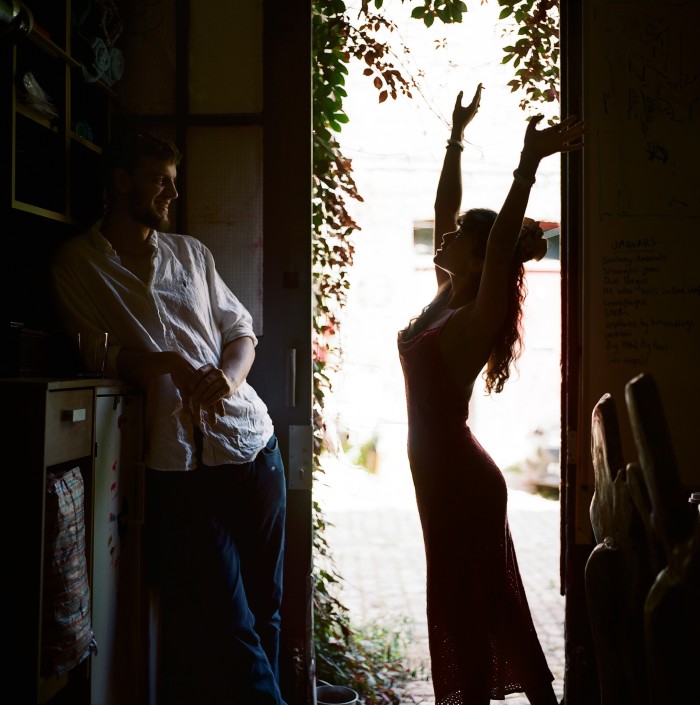
One of his most memorable moments with Leahy, however, was when the pair travelled to paint on a Welsh mountainside. “We almost fell off. I mean, literally, we were on this little billy goat trail,” says Denison-Pender. Leahy picks up the tale: “On the last day we ended up sharing a bottle of wine by the waterfalls. We were celebrating but hadn’t watched the time, and suddenly it was pitch black.” They made light of the situation while waiting to be rescued by a taxi. Says Denison-Pender: “It summed up the perseverance aspect of India. I thought this was huge – this is the person I’ve wanted for my paintings.”
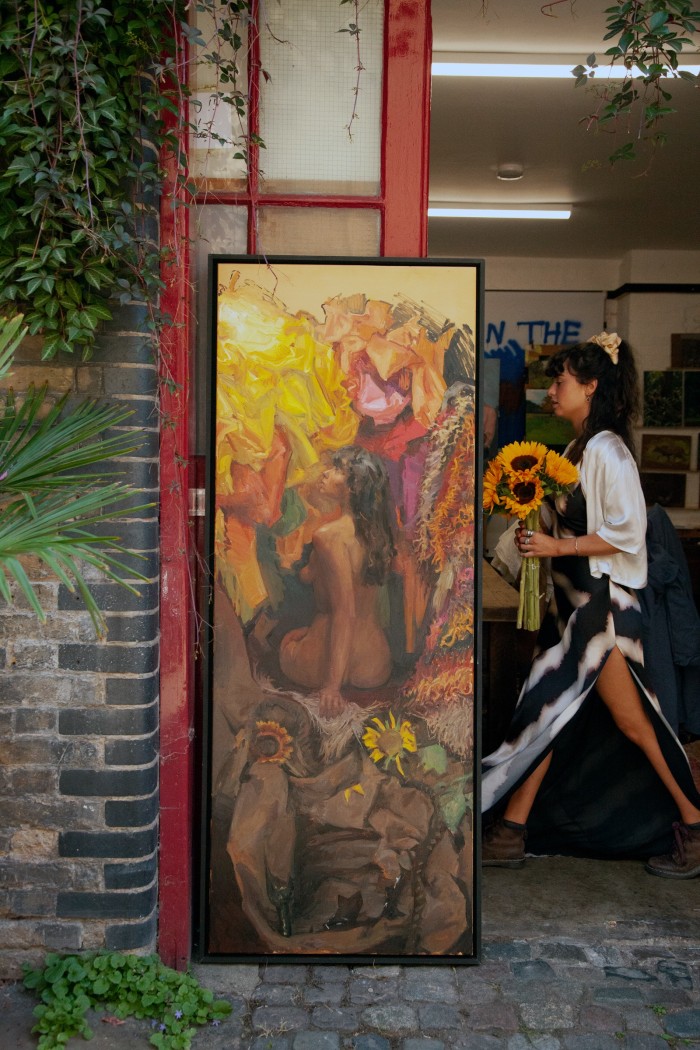
The result? Leahy became the focus of his Persevere exhibition at the Richard Green Gallery last year. “India comes from a family of eight siblings who’ve been brought up by her mum – her father wasn’t on the scene. It seemed like if I were to have anyone as the main character of the show, it had to be her. She deserved it because she’s had so many ups and downs.”
“I am very proud of the paintings. I feel like they are mine in some way,” Leahy reflects. Denison-Pender agrees: “You were as invested in them as I was. It’s funny how much the muse can have an influence on the painter. It’s a collaborative thing. We’re a team.”
Daisy Sims-Hilditch and Raoul Orzabal
Portrait and plein air landscape painter Daisy Sims-Hilditch and her muse Raoul Orzabal, both 30, have known each other since they were babies. Both artists now occupy studios in the same Chelsea building – and when inspiration strikes, Orzabal is always ready to sit for Sims-Hilditch as she paints.
“We’re very much like brother and sister. Our parents were friends and we went to school together from when we were quite young until we were around eight,” Sims-Hilditch explains. “Until I was chucked out,” Orzabal adds, hinting at the difficulties he has faced due to Asperger’s syndrome and dyslexia. The two went their separate ways, Sims-Hilditch eventually studying art in Florence before returning to London in 2016 and reconnecting with her childhood friend. Both had embarked on a journey as artists – hers classical in its genesis, his more conceptual – but it was Orzabal with whom she wanted to share a studio space, and she wasted no time in painting him.
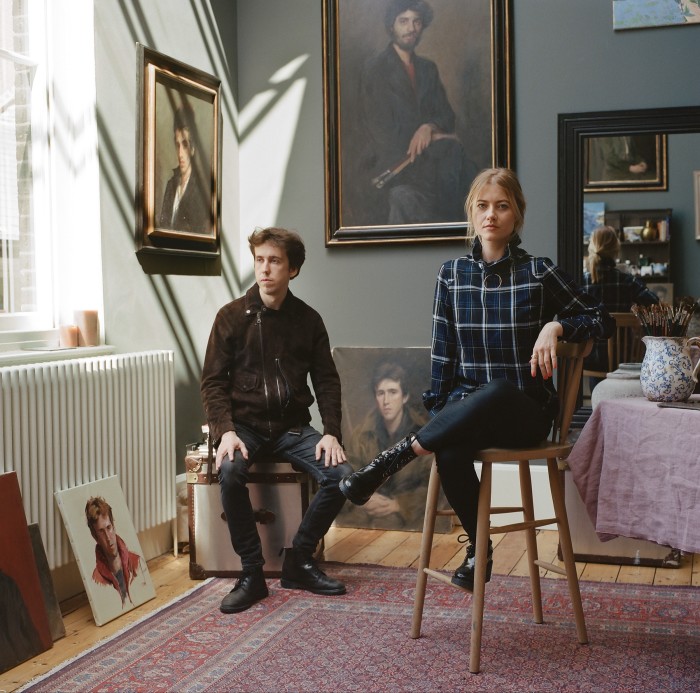
“Raoul has a fascinating character and face – he’s so knowledgeable about the history of art, architecture and politics [he eventually studied mixed media fine art at the University of Westminster]. He’s just an interesting person to talk to. That’s why I paint him, because of his amazing brain,” Sims-Hilditch says. “And, of course, he’s also very kind with his time. We did five paintings that first year.”
As a fellow artist who understands the process, Orzabal is always willing to act as Sims-Hilditch’s muse. Their sittings have become a collaborative and mutually inspiring experience. “He has interesting viewpoints on how it’s going without saying anything horrendous about the painting, which is really sweet,” she says. Orzabal agrees. “I try to look for something to correct rather than criticise,” he adds. Mostly, however, they have a lot of fun. “We just have really crazy times here,” Sims-Hilditch says of their constant in-jokes. “There are moments when he’s posing for me and I can see he’s trying to keep a straight face. At other times we just joke around. We have our own dialogue.”
The two have grown together as friends and artists. “I’m incredibly lucky to have such a patient model, and what’s been nice over the years is that if I’m inspired by an exhibition or something I’ve seen, I want to paint him again, because that’s when I can try a new palette or a different pose. There have also been times when I see him walking around the studio and the light will be really interesting in a certain corner. I never tire of painting him – I guess I’m evolving and he’s evolving,” Sims-Hilditch says. Orzabal uses the time spent posing for Sims-Hilditch to advance his own art. “I will be planning an artwork and it’s actually very helpful,” he says. “Also, I’ve been introduced to another style of painting. I didn’t know classical painting was still a thing so I wanted to pose for it – I wanted to learn about it and see what I would look like in that kind of painting.”
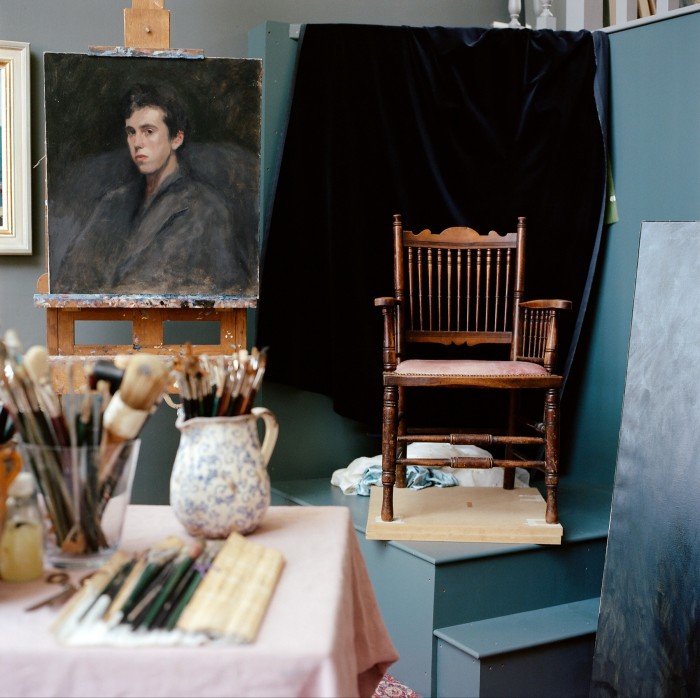
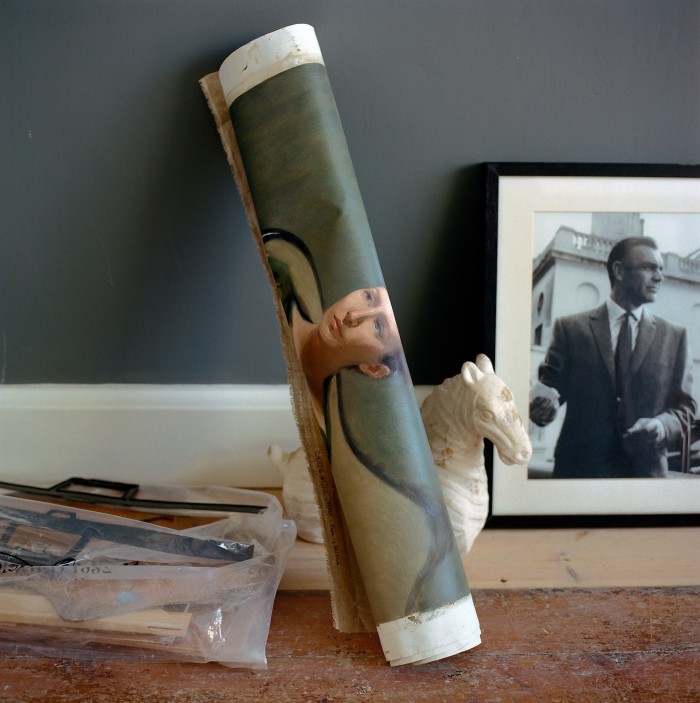
Sims-Hilditch’s work surrounds us in her studio – landscapes and faces captured in glorious brushstrokes peer out from slate-grey walls, sunlight streaking across the space. Tubes of paint are glimpsed in large wooden trays, books pile atop leather-bound steel boxes, and an armchair and rug warm the room – it’s a very cosy corner of the world.
As her work attests, Sims-Hilditch, a descendant of Royal Academician HWB Davis (her mother is the well-known interior designer Emma Sims-Hilditch ), is a rising star. Her work features in the private collections of art dealers Philip Mould and Rhod McEwan. She’s been included in exhibitions at the BP Portrait Award at the National Portrait Gallery, Saatchi Gallery and the Royal Institute of Oil Painters, and won awards including the Royal Society of British artists’ Gordon Hulson Memorial Prize. Earlier this year, she staged a sell-out solo exhibition of 75 paintings at London’s Portland Gallery.
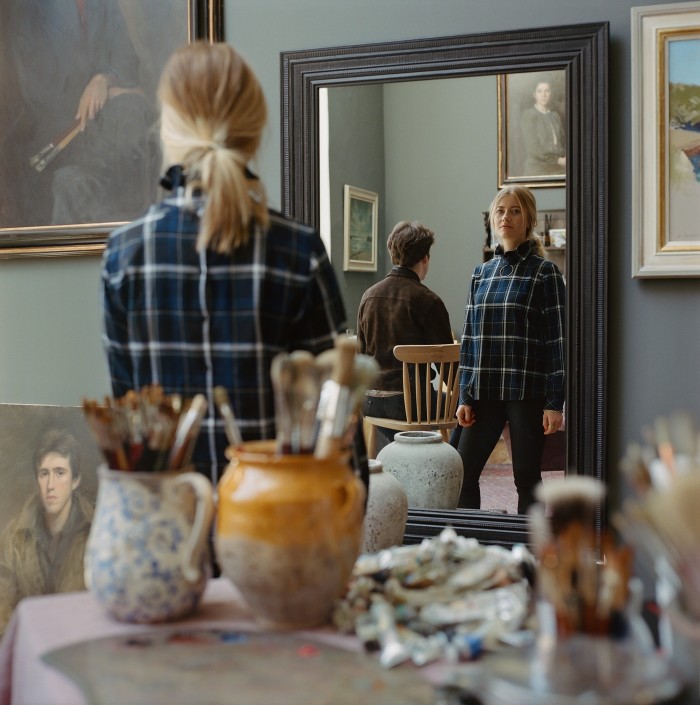
Her portraits capture a feeling that a photograph could never convey. “It’s more than a moment because you are with the sitter for a period of time, and you’ll notice every expression. I’ve seen every thought run across Raoul’s face and I think the portrait ultimately has a tiny bit of each in it,” she says. “It’s very different to a photograph that records just one second. That’s what is so interesting about painting. It captures emotion, and that is what you want to get across.”
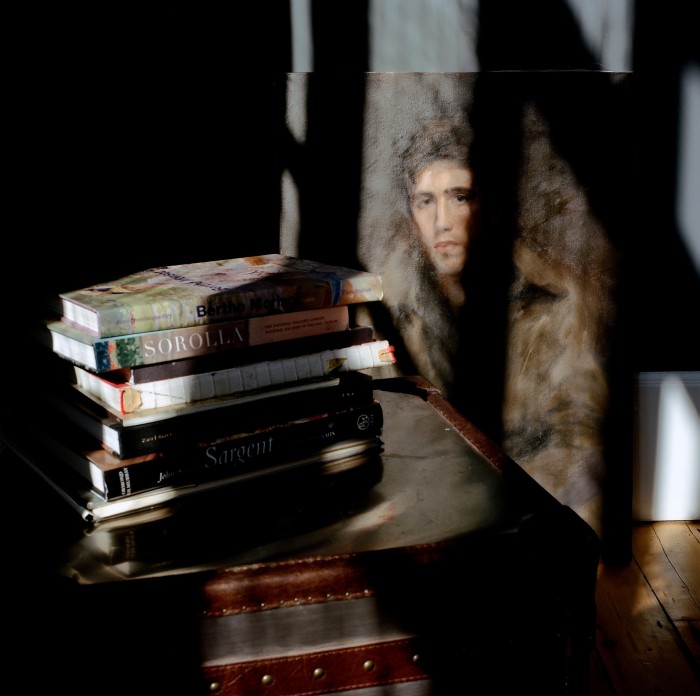
Those emotions can be both joyful and painful. Sims-Hilditch was painting Orzabal when he received the news from his father that his mother had passed away. “I had to take a month’s break,” he says, “but I did go back to finish the painting. I can look at it now as it is a reminder of what was going on.” Sims-Hilditch vividly recalls this dark time: “I think that painting does have some sort of sadness to it.”
Most of the works, however, are a celebration of their shared passion. “I really like the one where I’m wearing a red rain jacket rather than something formal to make the painting look more contemporary. It’s like a bust – so you only have the shoulders. Daisy hasn’t painted the rest,” says Orzabal of Raoul in Red. Sims-Hilditch jumps in. “I think it was quite a quick one, three sittings. With clients my sittings typically last two-and-a-half hours but with Raoul they can be much longer…” Raoul turns to his friend. “I really don’t mind,” he says. “What we do feels very real, very honest.” She smiles in turn. “We just get each other – together we can be exactly who we are.”
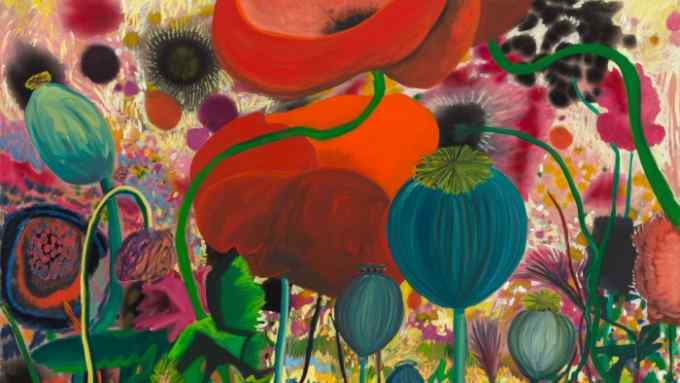
Comments